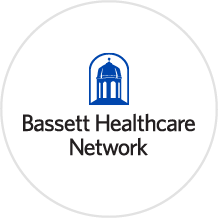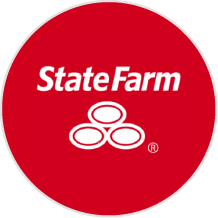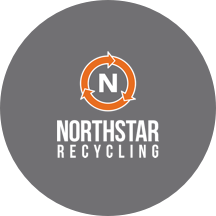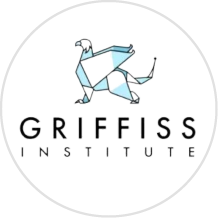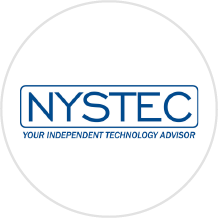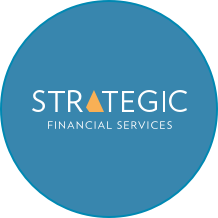 “When people clarify what matters and leverage their strengths, leaders emerge and anything is possible.”
“When people clarify what matters and leverage their strengths, leaders emerge and anything is possible.”
 “When people clarify what matters and leverage their strengths, leaders emerge and anything is possible.”
“When people clarify what matters and leverage their strengths, leaders emerge and anything is possible.”
For those feeling frayed at the edges, wondering when “doing your best” turned into barely hanging on—when the little voice is telling you “maybe this isn’t sustainable”–this panel was for you.
…and if you missed it, don’t stress! Here are some key takeaways from the conversation with Hilda M. Jordan, (CEO, HMJ Consulting), Marguerite Mitchell (Director of Education, Redhouse Arts Center), and AJ Bermudez (Author of Stories No One Hopes Are About Them, Screenwriter of My Dead Friend Zoe, Professor of Creative Writing at The University of Miami).
Download our Workbook: No, This Email Does Not Find Me Well. It’s full of tips, tools, exercises, and the science and research behind burnout in the workplace.
Download the Workbook
There’s a difference between being tired and being depleted. Burnout isn’t a vibe, mood, or a bad day—it’s a system-wide imbalance. That means both externally, in the systems present in the workplace; and internally, in the ways your body biologically processes stressors. It’s your body whispering ‘no’ while your calendar shouts ‘go.’ If you’re reading this, you may already know that. When unrealistic expectations are normalized, when output is expected without regard for capacity, when care is positioned as optional: burnout is around the corner. It shows up quietly at first—in unread emails, missed Zoom calls, forgotten appointments and the feeling that you just ‘can’t even.’
This recent panel wasn’t aimed at easy fixes or silver linings. It gathered a collective of bold, brilliant voices who came together not just to talk about symptoms—but to reimagine the systems that collectively exhaust and overwhelm the workplace. Panelists went beyond how burnout feels—interrogating what enables it. What follows isn’t a checklist. It’s a set of shared recognitions—five takeaways to act as conversation starters as we all try to make work fit more harmoniously with our mental, social, and physical health.
1. Burnout Stems from Mismatched Priorities—and Misunderstood Expectations
Before you can name burnout, you have to see it clearly. Not all burnout looks the same. During the panel, the conversation was framed by three distinct forms burnout can take
This is the burnout of urgency—driven by high ambition, precarious environments, and constant overextension. Think: hypervigilance, anxiety, a never-ending loop of effort without replenishment. As AJ Bermudez said, “You finish the project and don’t even know if you’ll work again.”
This form is quieter but no less corrosive. It emerges when capable people are left to coast—offered little responsibility, no learning curve, and zero invitation to stretch. As it was noted during the panel: “When someone does the bare minimum, but you know they’re capable of so much more, that’s not laziness—it’s misalignment.”
The most widely recognized version—and the one most often ignored until it's too late. This is the burnout of chronic neglect: when overwork becomes the norm, not the exception. Apathy sets in. Emotional numbness replaces ambition. As Hilda M. Jordan described, it feels like “professional depression”—when even good results elicit no joy, and everything just feels “muted.”
Each type of burnout is a signal, not a shortcoming. It tells us where friction lives between our values and our conditions, our vision and our workload. The goal isn’t to “power through”—it’s to realign. To design work that actually fits the people doing it.
Because burnout doesn’t mean you’re incapable. It means the environment is asking too much, too little, or the wrong things altogether.
2. Burnout Is a Not a Problem of Discipline, but of Design
Like faulty playground equipment or a busy intersection with no stop signs, bad design threatens safety. In terms of burnout, a poorly designed workplace (with hierarchies based on biases, opaque terms of compensation, or dependencies on inequitable invisible labor), threatens psychological safety. Without psychological safety, humans tend to feel undervalued and disrespected—the very reasons they tend to search for opportunities elsewhere. As Marguerite Mitchell says: “psychological safety for students, adults, everybody, is not necessarily being nicey nice. It’s being honest. It’s being open, it’s being respectful…’
Each panelist brought their unique expertise, yet each pointed to aspects of a common cultural fallacy: that if you were just a little more resilient, you’d be fine. However, if nearly 70% of professionals feel burnt out, it’s not about personal grit. That points to a collective design flaw: meaning self-care won’t serve to fix what needs to be addressed at a systemic level.
Reimagining flawed systems, however, can yield an ecosystem where people–and the work they do–can flourish.
 "You shouldn’t pour from your cup. You should pour from the saucer—only what overflows." – Marguerite Mitchell
"You shouldn’t pour from your cup. You should pour from the saucer—only what overflows." – Marguerite Mitchell
3. Great Leaders Celebrate Wins and Remember the “Why”
Hilda M. Jordan pointed to a straightforward, but oft overlooked, strategy for boosting morale: “…go back to the mission. Did the ball move forward today? And you know, when it comes to your mission and what you stand for…something happened that moved the mission forward even a little bit today. Maybe it wasn’t a ton today, depending on what was going on, but that ball did move a little bit more forward…”
And Jordan’s insights echoed the urging from thought leader Simon Sinek, who says “Great leaders are those who trust their gut. They understand the art before the science. They win hearts before minds. They start with WHY.”
We used to build our tribes around a common purpose—survival. Today, in an uncertain world, our leaders are tasked with doing the same. But mitigating burnout also means creating a culture not only where the humans in your charge can survive (see:”make a living”); but can thrive.
4. Culture Isn’t Set In Stone—It’s What We Tolerate, Normalize, and Inherit
Marguerite Mitchell named the superficial balm that gets passed off as “wellness”: yoga-at-lunch, the occasional gift card, a surprise Friday off.
But culture lives in policy, not pizza. On whether it’s okay to say “I can’t take that on right now.” In who gets thanked—and how. In whether your day ends when the meeting does, or if it quietly follows you home in pings, guilt, and “just one more thing.”
AJ Bermudez went on to talk about the broader cultural norms, good and bad, and how they influence the workplace––saying: ”It’s a lot of work for individuals with disabilities who have to bridge the gap to ableism before they can even begin to do the work they’ve come to do…It is famously work, whether we have bridged the wage gap or not, for women and female presenting individuals who have to smile and nod more often and pretend that things are normal, … It’s incredibly problematic for persons of color who are always adapting around whiteness; the kindest thing you can do for yourself and your colleagues in any work environment is to identify the pillar of normalcy, if there is one, because normalcy is a myth, and normalization is a huge headache, at the very least for individuals who are rising to meet it.”
5. Effective Leadership is Not a Performance of Power—It’s a Practice of Presence
Leadership that’s attuned trumps leadership that’s authoritative. The panel invited us to rethink leadership not as status but stewardship: the ability to ask without assuming, to notice without naming, to lead without losing ourselves. In that space, burnout doesn’t just get named—it gets healed. Attuned leaders–culturally humble and aware of the collective impact of policies in and outside of the organization– can begin to redesign how we hold power, distribute bandwidth, and honor humanity over productivity.
Daneli holds fast to the belief that greatness is not reserved for others, and that means leaders who are present with the real-time needs of their teams can inspire great achievements—even in times of crisis or upheaval. Of course, that requires leaders to understand burnout not as a personal failing, or a problem with a quick fix. It’s a signal that it is time to mature in one’s leadership: to grow in empathy, invention, and curiosity. It’s also a signal that no workplace can afford to ignore. According to Firstpost.com, “The American Journal of Preventive Medicine estimates that burnout costs the average US company with 1,000 employees approximately $5.04 million annually.”
The work ahead isn’t about surviving our jobs, but reshaping them. If burnout means you, or your team, has been carrying too much, for too long, with too little support: then perhaps, it is time to share the load.
 "Sometimes the most generous thing you can do is say, ‘I don’t have capacity for that right now.’" – Hilda M. Jordan
"Sometimes the most generous thing you can do is say, ‘I don’t have capacity for that right now.’" – Hilda M. Jordan
What the panel affirmed—again and again—is that hustle will not yield healing. Exceptional as we may be individually, it is only together that we can evolve: interdependently. This starts with clearer boundaries and honest conversations. It continues with workplaces that see people as complex humans, not economic units.
If any of these takeaways sparked something in you—pause with that and consider how imagination and innovation can shape a healthier work/life. You don’t have to fix it all today…or even tomorrow.
But what better time than now to start the conversation?
Download our Workbook: No, This Email Does Not Find Me Well. It’s full of tips, tools, exercises, and the science and research behind burnout in the workplace.
Download the Workbook
Send us a message using the form below, or email us at [email protected], or call 315-508-4370



